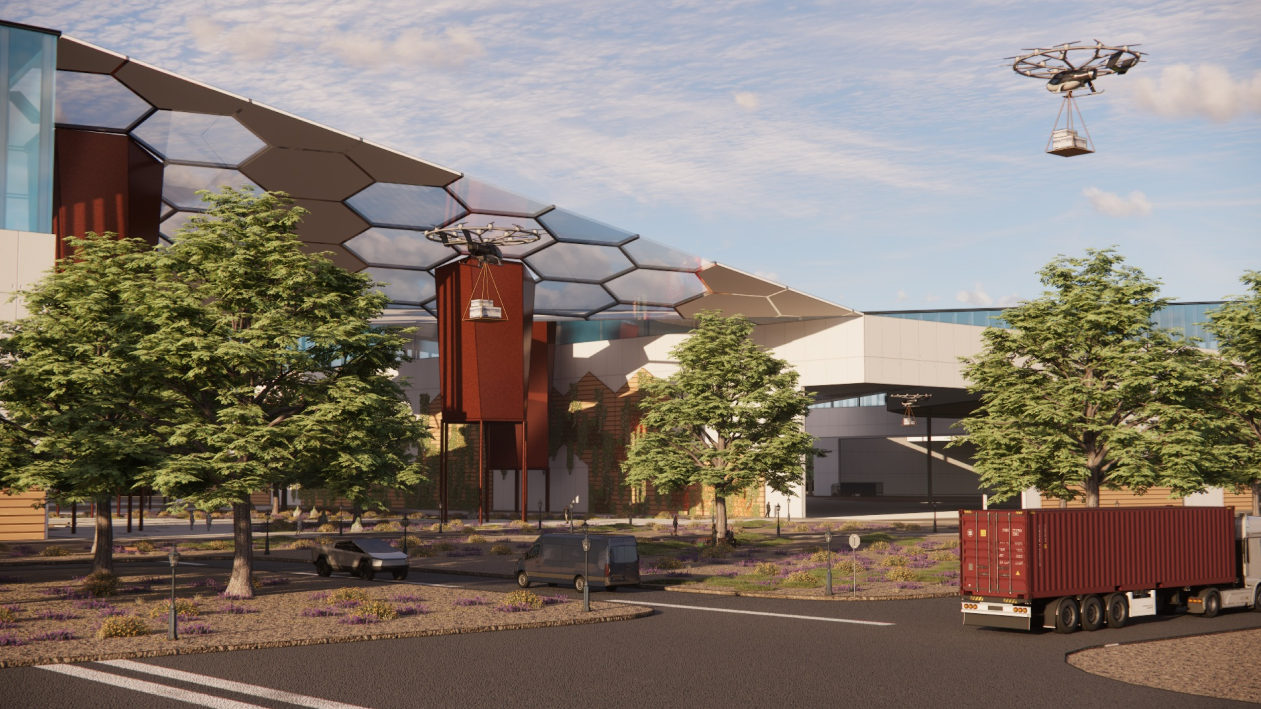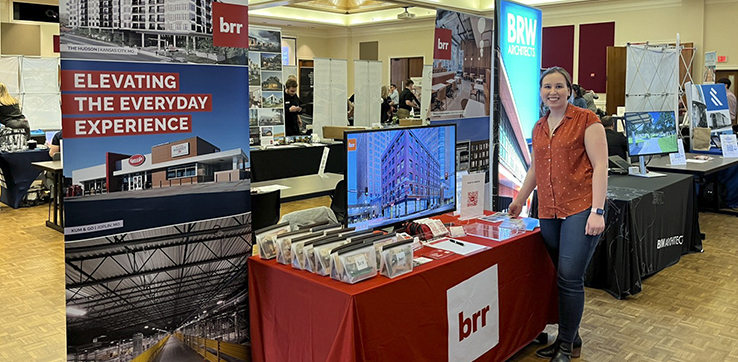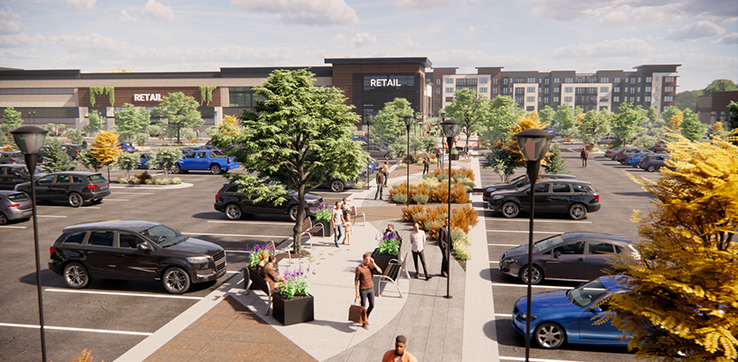2024 Industrial Design Charette: The Future Warehouse
At BRR, two key elements of our mission statement are to create inspiring architecture and relentlessly innovate. To support this mission, the firm often holds design charettes to motivate teammates to flex their design skills and stretch their imaginations.
A recent charette challenged our teammates with a question: what is the future of sustainable warehouse design? They were asked to re-envision a fulfillment center in California and apply new sustainability measures to meet the International Energy Agency’s 2050 Net Zero Goals.
The charette called for creativity that exceeds modern sustainability measures and imagines how the warehouse of the future looks, functions and interacts with its surrounding environment. It was vital that participants anticipate future challenges and push the boundaries of technology that may not yet exist.
A New Look for Industrial
For some teams, concepting the future warehouse started with rethinking the shape and form of the building itself. Warehouses as we know them today, are typically rectangular buildings. Charette concepts found that a warehouse tailored to efficient and new offloading and loading systems, resulted in a handful of new building shapes. For example, some concepts resulted in cylinder and U-shaped warehouses that create a different silhouette than a traditional warehouse.
In addition to the building itself, the grounds were envisioned with sustainability in mind. As a guiding theme, BRR leaders cited the International Energy Agency’s goals as a key resource for design standards. Teams were prompted to exceed sustainability practices in modern architecture and implement methods not typically seen in industrial warehouses.
Some design concepts featured rooftop garden installations, rainwater collection and drought-tolerant landscaping – both for an environmental and decorative benefit. Many teams utilized the surrounding area to plant trees, while one designed a canopy forest made from recycled materials and solar panels, which will reduce heat and perform as an energy source.
While plant life supports sustainability measures, it creates a more approachable warehouse and softens hardscape architecture.
Envisioning Future Technology
With technology constantly evolving, teammates were tasked to think ahead of the curve and deliver a range of ways the warehouse of the future will function. An array of unique concepts surfaced within each team; however, some overlapping ideas include:
High efficiency turbines: Designers utilized solar energy to circulate fresh air and cool down machinery. Some concepts leveraged the winds to create an independent, renewable energy source.
Drone technology: Implementing drones as a shipping method reduces carbon emissions and increases efficiency, as airborne drones aren’t impeded by ground-travel traffic. These conceptual warehouses take into account extra space to store these drones and apply repairs.
E-Truck charging stations: The future of transportation is in electronic vehicles and some charette concepts took into consideration charging stations for e-trucks near loading docks the warehouse.
Multilevel warehouses: In the industrial industry, efficiency is key, and teams implemented vertical conveyer systems, automated systems and indoor drones to create an effective loading and unloading process.
Warehouses Designed for the Employee
Traditional warehouses are often designed prioritizing efficiency versus the employees that work there. The charette designs created elevated spaces that provide a haven for employees to disconnect from the warehouse and reconnect with the environment. Most teams featured benefits like:
- Community gardens
- Outdoor bike and pedestrian paths
- Closer proximity for employee parking
- Outdoor seating areas
- Pavers that reduce the ground temperature of employee parking lots
- Workout areas on property
For many designers, this element was as significant as integrating new technology. With high competition for talent in the industrial industry, amenities for employees are critical to enticing new workers. By adding experiences for employees, it can help employers retain current workers and attract new talent.
The Future of Warehouse Design
Evolving technologies, sustainable initiatives and increased productivity are all factors which impact industrial spaces. Owners often seek ways to increase the efficiency of the building, but also perform efficiently and effectively for their clients and for their employees. The charette prompted BRR’s teammates to thoughtfully consider and design for what the future of the industrial industry may hold.








